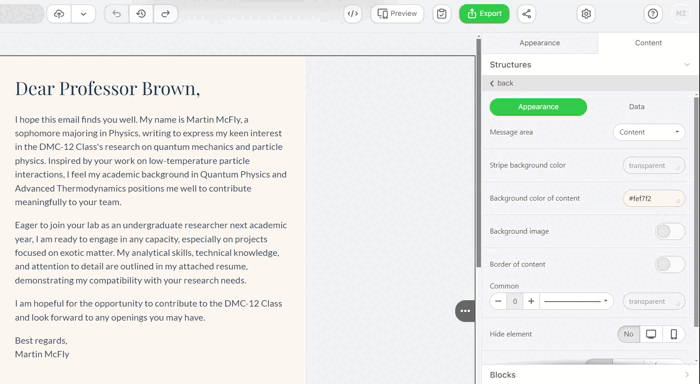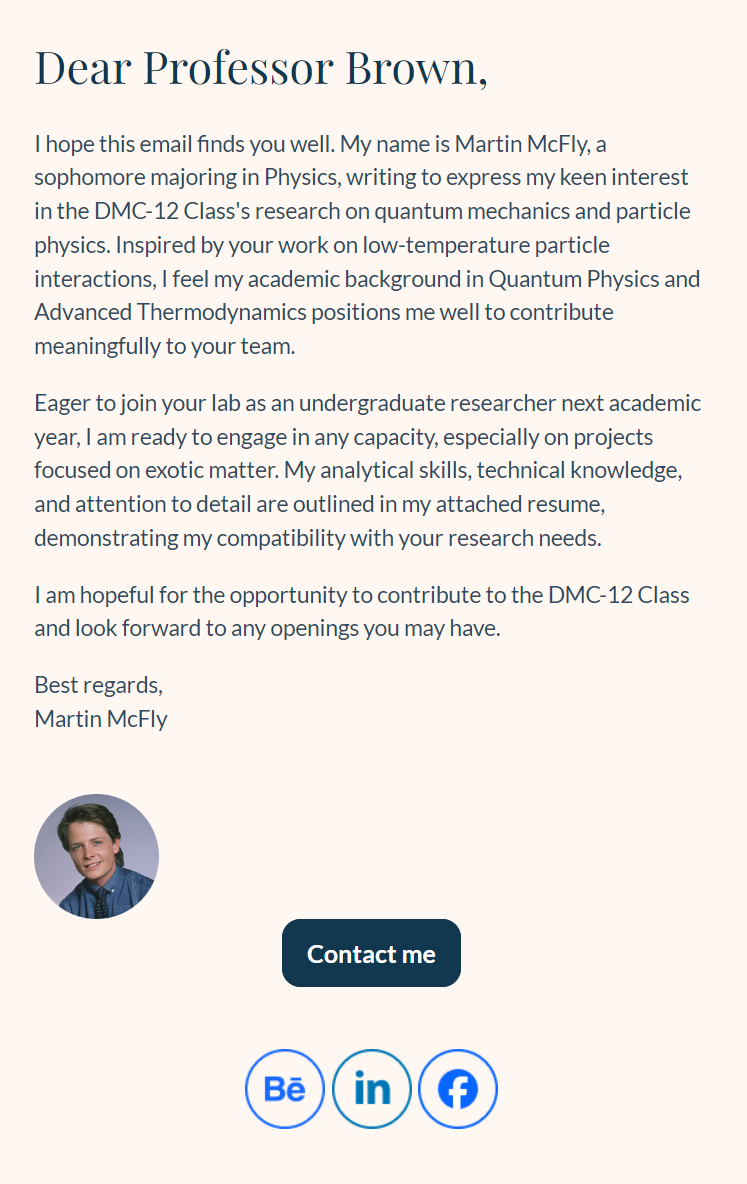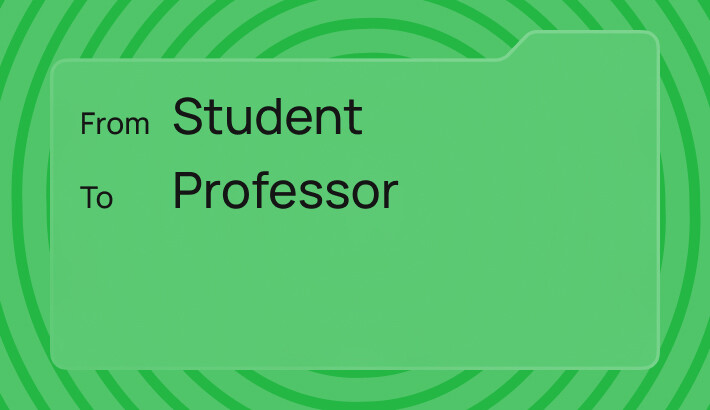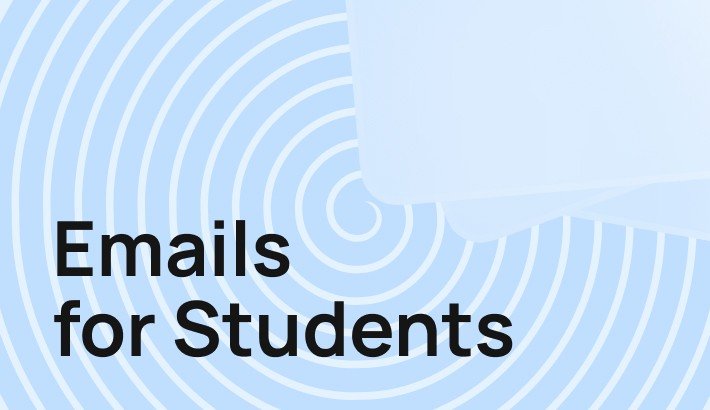55% of people use email to communicate about work-related issues, and the education industry is no exception. In fact, it has the highest email open and click-through rates of all industries. Since email is so widely used in universities, it’s crucial to learn the correct way to communicate through it.
In this article, we will explore ways to enhance the appearance of your emails to professors, covering everything from crafting an engaging headline to including a formal closing. In addition, we’ll show you Stripo’s editor features that will help you create and organize your emails quickly and easily.
What emails do professors receive?
46.8% of teachers check their work email more than 10 times a day. Here are some of the main types of emails they receive:
- questions about the lecture material, class syllabus, etc.;
- feedback on the assignment;
- notification of absence or personal problems;
- discussions of academic or future career advice;
- requests for recommendations;
- participation in research;
- cooperation or consultation with various companies;
- scheduling appointments.
I also asked the experts how often professors receive emails and which ones they pay the most attention to.
Expert

I receive emails nearly every day from students. Most are regarding grades and related matters, but the ones I take the most seriously are the student emails that tell me what they’ve learned from me and express gratitude, and also more personal messages from students who are struggling in class and/or in their lives. I also answer students who ask me for work references, and I nearly always provide them.
Expert

First and foremost, it is corporate communication with my students (meaning those for whom I am a supervisor of research, internships, etc., or a teacher of a discipline). They are usually the most numerous. The lion's share of emails are offered to participate in various scientific and practical events. Then, there is information on subscription materials (if I specified a corporate email for this purpose), correspondence with colleagues from other universities, and projects I participate in.
How to write an email to a professor
Whether you are a student who wants to get feedback on a current assignment, a fellow scientist, or a representative of a company conducting research, it’s important to use a certain professional tone to ensure that your emails get noticed and don’t cause a negative reaction. Let’s take a look at each aspect of such an email.
Subject line
Start with a clear, specific subject line. Make sure it directly relates to your email’s purpose, allowing your professor to understand your needs at a glance. For example, use “Extension Request for Research Paper” or “Clarification on Syllabus.”
Professor’s title
Begin your email with a polite greeting. Opt for a formal salutation like “Dear” or “Hello,” accompanied by your instructor’s title, which could be “Professor [Last Name]” or "Dr. [Last Name].”
In different countries, the approach to addressing teachers varies according to cultural and educational norms. For instance:
- USA: Professors are often called “Professor Smith” or “Dr. Smith,” with “Mr.” or “Ms.” as less formal alternatives.
- United Kingdom: It’s common to use academic titles and surnames or sometimes surnames alone in a formal context.
- Germany: Correct academic titles are crucial with formal addresses, like “Herr Professor Doktor Schmidt.”
- France: Teachers are typically called “Monsieur” or “Madame,” with academic titles used less frequently at early education levels.
- Japan: The suffix “-sensei” is added to surnames, signifying respect.
- India: Addresses are less formal, often using “Sir” or “Ma’am” without specifying names.
If you read us from other countries, please write in the comments about how you address professors there. We will gladly add this to the article.
Self-introduction
Introduce yourself, including your name and the class you’re in—for example, “My name is Alex, and I am enrolled in your ___class.” It helps to specify, since professors often handle multiple classes and may not recognize every student. If you’re already known to your professor, simply start with a friendly greeting like, “Hope your week is going well!” or “Happy Friday!”
Stating your purpose clearly
While preparing this article, I came across numerous tips to keep your main message concise. The professors themselves also write about this on Quora.
After your introduction, it’s vital to directly state why you’re contacting your professor, keeping it brief due to their tight schedules. Strike a balance where you’re neither too formal nor too casual, steering clear of colloquial language and humor. Specify any action you need from them, like a deadline extension or feedback request.
And here's some expert advice that summarizes all of the above.
Expert

It’s best to keep emails short and to the point and refrain from being too informal. Use subject lines, and don’t start with a “Hey” or a demand. It’s a turn-off.
Expert

What to avoid? There are three main groups:
a) lack of specificity, illogic, unreasonableness - if something is proposed, the professor automatically analyzes the text along the chain: what is the essence, purpose, task, and what is my function or role here?
b) references to sources, persons, etc., that are difficult to check, verify, and confirm their existence and origin. This is a factor of reliability and truthfulness of information;
c) illiteracy and vagueness of statements, because in most cases, this leads to termination of correspondence, if the situation allows it or to an endless number of emails of clarification regarding the correct perception of information by both parties;
d) disrespect— at least to the title, at most to the experience.
How long should the text be? It all depends on the situation. You can read lengthy letters if it is an already established correspondence on a particular issue. For professors, the amount of text is fine. The main thing is whether it is worth reading :). I can read up to 800-1000 characters in an entire email. If this is the first letter of inquiry, it is better to agree on the further correspondence format, both in the letter itself and in the attached files.
Speeding up the email creation process with Stripo
Let’s say you’re sending a request for research to many experts. This is where you can use Stripo content modules to build emails faster. These blocks make it easy to save, combine, and move important details from one message to another, speeding up the process when you have many emails to send. Our email templates are structured to automatically divide into these manageable sections, all of which are accessible in your personal library.
(Source: Stripo editor)
If you represent a university or a company interested in collaborating with professors, take a look at this template from Stripo. It serves as an example of how to present information in an engaging and structured manner. As usual, you can edit and customize all the elements to suit your needs.
Formal closing
Sign off your email with a note of thanks, expressing appreciation with phrases such as “Thank you for your understanding and support” or a straightforward “Thanks for your time.” Finish with a courteous closing, using your first name. Simple and respectful sign-offs like “Best,” “Thanks,” “Sincerely,” or “Regards” are advisable.
Follow-up etiquette
Is it necessary to respond to a professor after receiving an answer from them? Deborah J. Cohan, a Professor of Sociology at the University of South Carolina-Beaufort, noted in her article that addressing a professor without responding to or even checking your emails afterward is considered very impolite.
There was even a whole discussion about this on Reddit. Opinions were divided: Some believed that offering thanks for the response was a basic rule of etiquette, while others worried that they would distract the professor once again with their new message. But a user in this thread who teaches at a university emphasized that thanking is a must. According to them, doing so not only allows you to be polite but also confirms that you have understood everything.
Correct grammar
Whether the professor teaches humanities or sciences, sending them an email with grammatical errors is something you want to avoid.
Proofreading is essential, and with the Stripo editor, you can effortlessly check your text for errors using the built-in GenAI tool. This tool helps you enhance your email by correcting grammar, shortening or supplementing the text, translating, and even changing the tone of the message.

(Source: Stripo editor)
I also asked our expert about an interesting real-life example.
Expert

Correspondence with students is a daily quest :). An interesting and extraordinary one? Perhaps when I was asked to take a survey on the vision of Ukraine's future development in the context of priority industries, directions, and areas of economic drivers. What made the email memorable? In addition to a well-formed questionnaire, the letter was clearly and logically constructed with a rational justification of why "my" opinion is interesting and important to them.
Example of an email to a professor
Following all the recommendations, I made an example of an email to a professor requesting to join a physics class. I was polite and expressed the main point of the message, noting how impressed the student was with the professor’s work, which is also advised by experts.

(Source: Stripo template)
Wrapping up
Mastering email etiquette is crucial for your academic career. In this article, we have discussed the importance of respectful and clear communication with professors, as well as how the Stripo editor simplifies the process of creating emails and makes them more attractive.
Using Stripo's tools, you can effectively organize and customize your messages, ensuring that they resonate with your recipients. We are here to support you as you improve your email skills. We wish you great achievements in your studies—Stripo is happy to be a part of your university toolkit.









0 comments